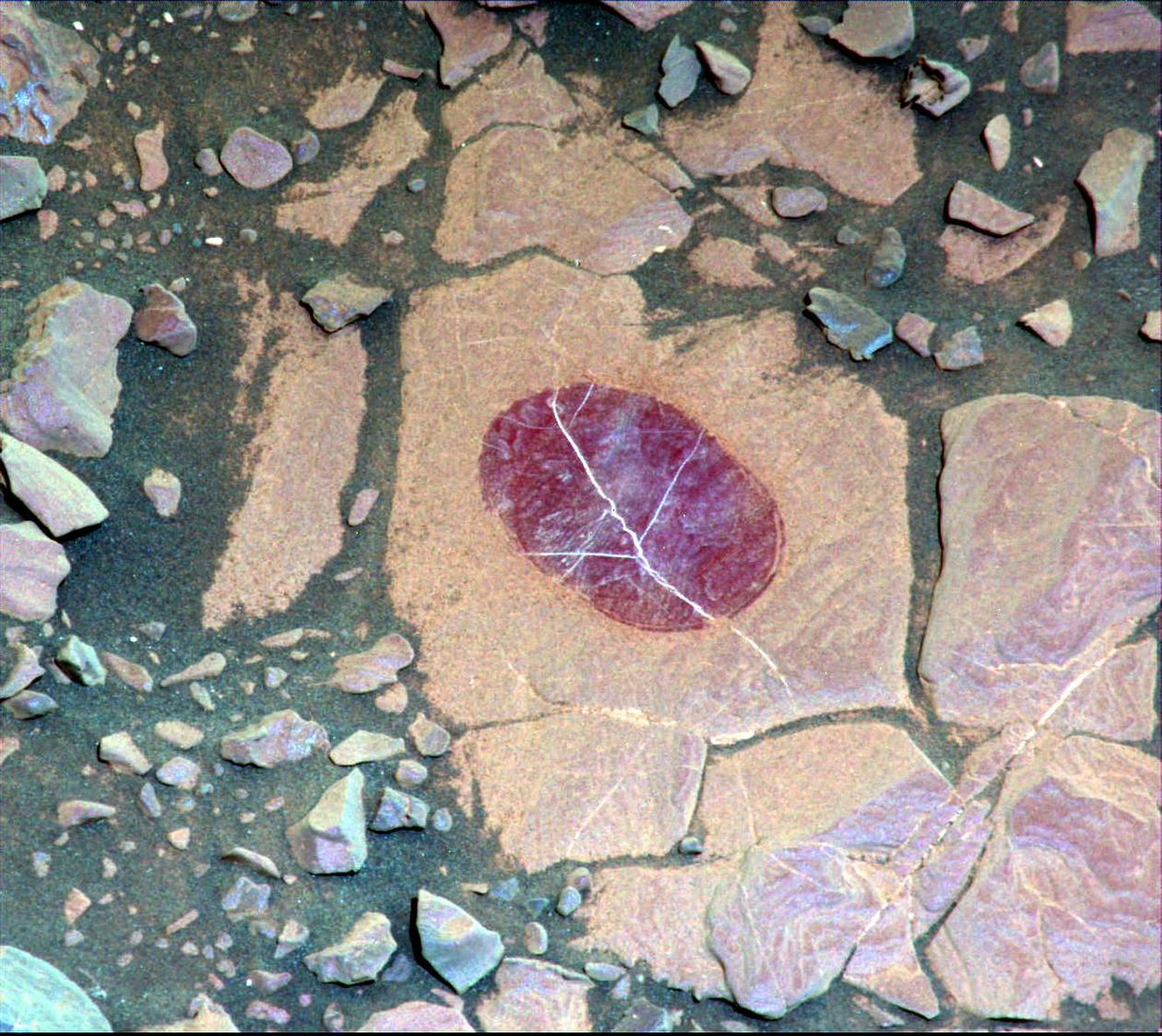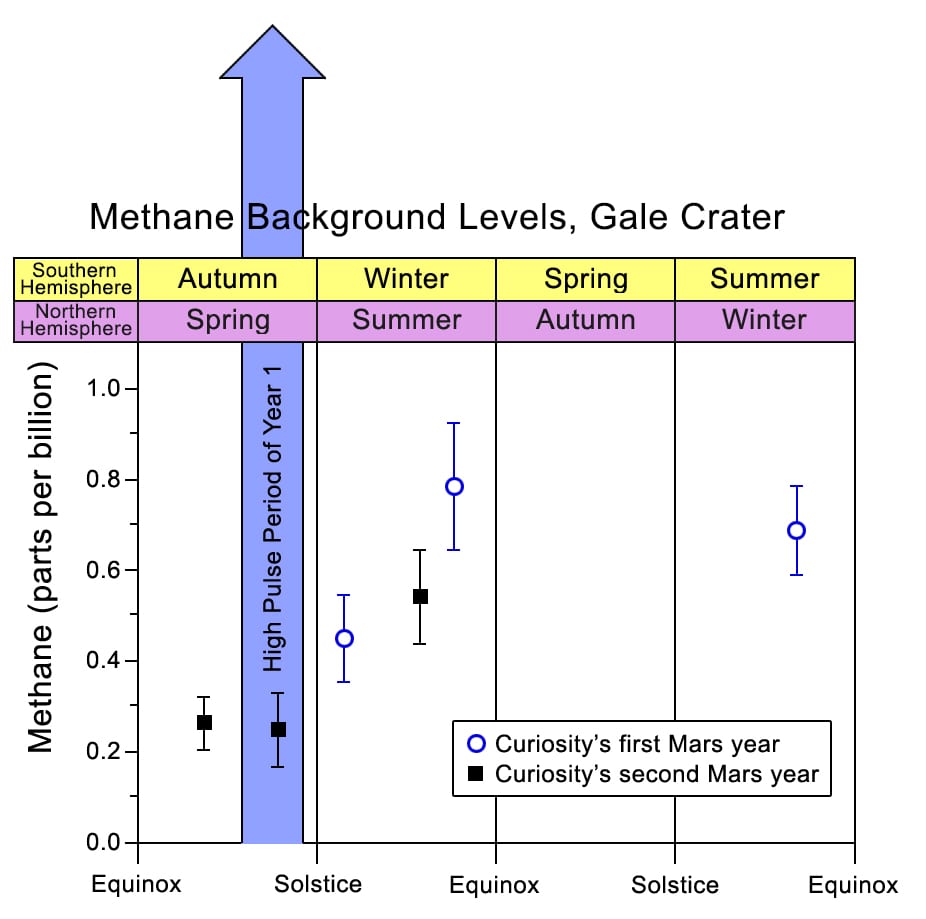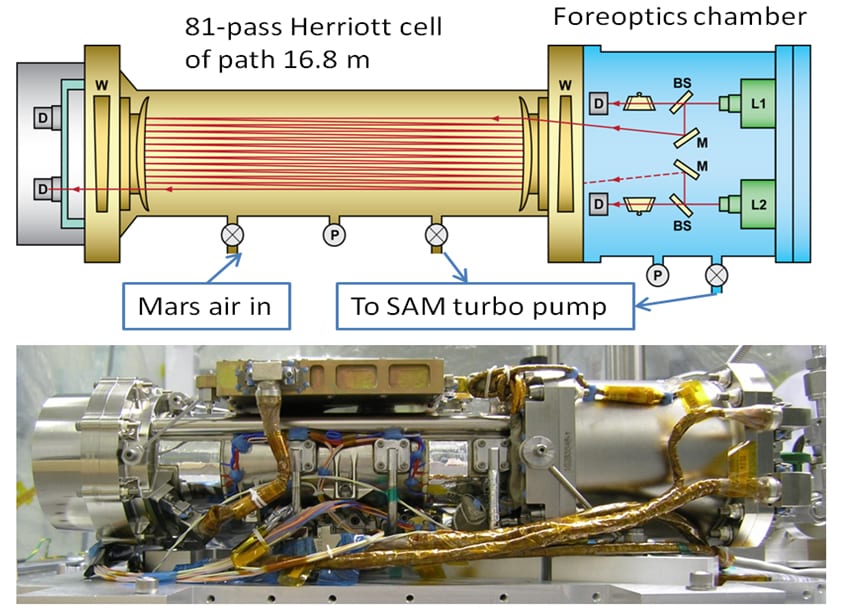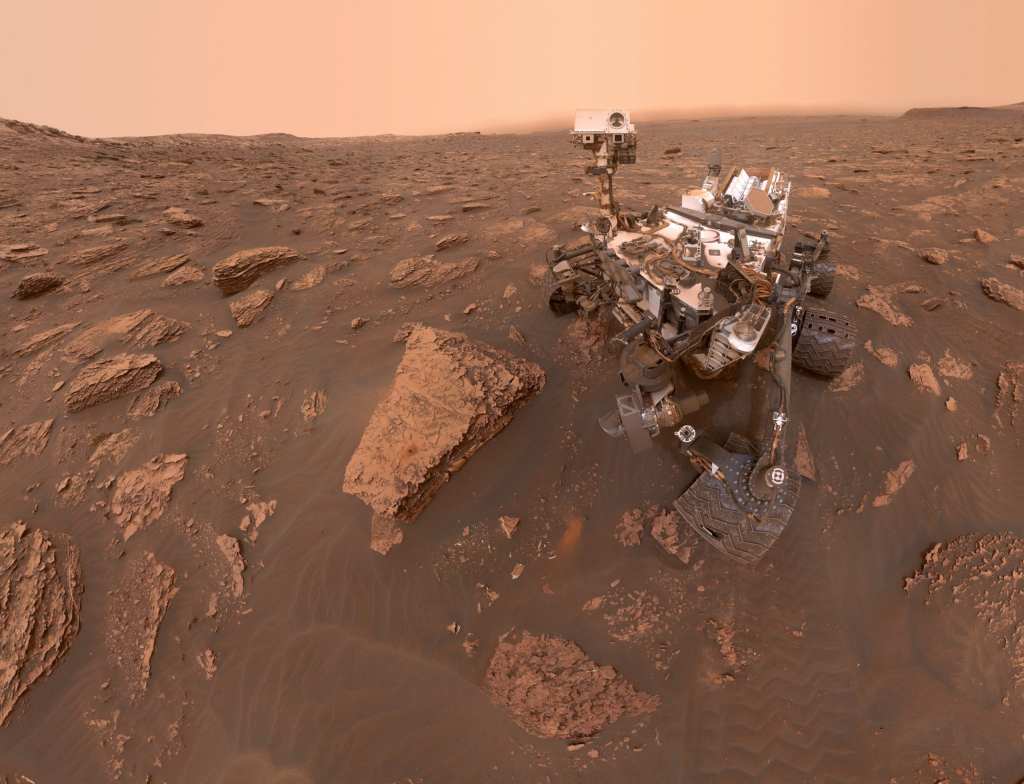The Curiosity rover landed in Mars’ Gale Crater in 2012, and since then, has been studying all things Martian, so we can know more about the planet’s past.
Well, what we now know, more than anything, is how much we don’t understand about what’s happening out there.
Case in point: the rover’s tunable laser spectrometer (or Sample Analysis at Mars, SAM) recently found a huge amount of methane–the largest since landing there.

Photo Credit: NASA
Followed closely by the discovery that oxygen is behaving in a way scientists don’t quite understand.
In the past six years, SAM has determined the following about the atmosphere of Mars: 95 percent is carbon dioxide, 2.6 percent molecular nitrogen, 1.9 percent argon, 0.16 percent oxygen and 0.06 percent carbon monoxide.
Mars has seasons sort of like Earth, but they happen because the air pressure changes when carbon dioxide gas freezes at the poles during winter. This event causes the air pressure to lower. When the carbon dioxide eventually evaporates and is redistributed into the atmosphere, the air pressure rises for a Mars spring and summer.

Photo Credit: NASA
Nitrogen and argon followed a similar pattern.
Oxygen, however, didn’t.
It actually rose and peaked at 30 percent during spring and summer, then lowered to normal levels in fall.

Photo Credit: NASA
This pattern has repeated itself since Curiosity started monitoring. The only difference was that the levels of oxygen rising and falling varied.
Is the oxygen being created by something? What’s causing it to fall?
According to CNN, one of the authors of a new paper covering the seasonal variations, Sushil Atreya, said the data was “mind boggling.”

Photo Credit: NASA
The scientists involved in the study were so puzzled they even had the rover checked out for operational issues. But Curiosity was working as usual.
Melissa Trainer, study author and planetary scientist at NASA’s Goddard Space Flight Center, said:
We’re struggling to explain this. The fact that the oxygen behavior isn’t perfectly repeatable every season makes us think that it’s not an issue that has to do with atmospheric dynamics. It has to be some chemical source and sink (of elements into the soil) that we can’t yet account for.
So, what about the huge amount of methane?

The Tunable Laser Spectrometer on NASA’s Curiosity Mars Rover
Photo Credit: NASA
On Earth, most of our methane is created by living things, but also by rocks and water. Mars has plenty of rocks and water.
Principal Investigator Paul Mahaffy of NASA’s Goddard Spaceflight Center in Greenbelt, Maryland, noted that current measurement systems cannot determine the exact source of methane. What they do know, however, is that the methane fluctuates with the seasons as widely as oxygen.
Could the strange behavior of the two gases be related somehow?
Atreya believes so, although no one can figure out how.
In the meantime, the team invites any and all Martian experts to chime in.






